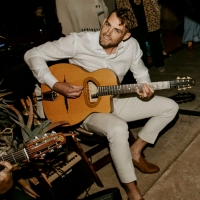DjangoBooks.com
Welcome to our Community!
Categories
- 20K All Categories
- 1.1K General
- 476 Welcome
- 59 Archtop Eddy's Corner
- 146 CD, DVD, and Concert Reviews
- 385 FAQ
- 26 Gypsy Jazz Italia
- 27 Photos
- 202 Gypsy Picking
- 21 Unaccompanied Django
- 15 Pearl Django Play-Along Vol.1
- 17 Gypsy Fire
- 45 Gypsy Rhythm
- 1.4K Gypsy Jazz University - Get Educated
- 131 Gypsy Jazz 101
- 227 Repertoire
- 218 History
- 708 Technique
- 51 Licks and Patterns
- 6 Daniel Givone Manouche Guitare Method Users Group
- 20 Eddie Lang Club
- 1.3K Gypsy Jazz Gear
- 802 Guitars, Strings, Picks, Amps, Pickups and Other Accessories
- 459 Classifieds
- 49 Recording
- 62 Other Instruments
- 18 Violin
- 5 Mandolin
- 22 Accordion
- 7 Bass
- 10 Woodwinds
- 347 Gypsy Jazz Events
- 143 North America
- 109 Europe
- 95 International










Comments
And I don't think it's fair to say someone who doesn't react to that is "not listening or artistically limited", perhaps the soloist was in the middle of another idea. If you had a line built around, say, a lingering flat 9 or sharp 9, you can't always just adjust it to a natural 9 on the spot. The whole flavour depends upon the notes that have already come beforehand.
You might argue that a 9th which was clashing was not a "tastefully played" 9th, but the reality is you can't reliably predict where the soloist wants to go - not until you've been playing with each other for years, have built up a good familiarity together and some of that magical musical telepathy is kicking in.
Two accompaniment instruments yes, they should stay out of each other's way, or pay attention to the register and not use different extensions at the same time and such.
Does anybody have an example of it being done in a bad way? A soloist and accompanist.
Buco, yeah for sure, it also helps me not clash with another rhythm player, but first of all I always defer to the soloist. I feel like as a rhythm player it is my job to provide a foundation, help them sound good, and cover the basic harmonic structure (triad and maybe a 6th... or a b7-for a dominant). I always think it is 'safer' to do less and avoid doing too much. A good soloist really doesn't need our 'help' with color tones especially in this genre IMHO. A good soloist has a ton of stuff going on. It isn't like funk or something where it is mostly 'about' the rhythm section (like the whole band is a rhythm section). That's why it takes a really interesting soloist to really make this genre work. There just isn't that much going on typically in the rhythm section except the bass hitting 1 and 5 every other beat and the rhythm guitar pulsing out la pompe. And triads actually sound cool IMHO. Try them it's a nice change. If the soloist isn't pretty badass it isn't going to be that interesting IMHO. In contrast, you can take a genre like funk which is all 'groove' and no one even needs to take a solo. That all said, if a soloist isn't that accomplished I will definitely get 'busier' to try to help fill out the sound.
Jazza, yep. Simplify and slow it down. A while back I 'progressed' to the point where I finally realized that my pompe really sucked. I was lucky enough to get a few lessons from Gonzalo and he helped a lot. Initially, all we played was Am6 (5x45xx) and even completely damped the 2 and 4 to isolate the 1 and 3 to really break it down, then added in the 2 and 4. Really helped me get the feel of it, at least I'm not disgusted with my pompe anymore.
The flip side is that a soloist probably will NEVER get mad at you for NOT playing a bunch of color tones, but they may not be that excited about it if you are constantly throwing in color tones. IMHO keep it light and dry and keep good time and you have done ur job. If you sneak in a color tone here or there where it makes sense and helps the soloist that's gravy but not necessary. Let whomever is trying to sit in Django's chair add the fills and flair.
Ok lunch break over, back to the shop....
BTW, in the post I did above, I didn't mean to imply that a rhythm section has an 'easy' job. Quite the contrary, it's really hard to sound swinging and keep good time. In fact, playing in a good rhythm section is a wonderful thing!
Tommaso Papini (at DiJ) made the suggestion that rhythm is an act of devotion to the soloists. This has stuck with me since I heard this in 2013. Kamlo said something to the effect of on a scale of 1-10, rhythm players should be around 6, but should adjust as necessary both up and down, but never overpowering the soloist. That's been a good rule of thumb for me as well.
It sure is tempting to fall in love with the sound of these guitars, especially when they are barking so nicely. But it's also satisfying on another level to lay out that rhythm carpet where the good soloists are able to do what they need to do.
Hope this doesn't come across as preachy. I've been the loud guy in the room/jam. These are just a few of the things that work for me in my twice weekly gig.
The above statement brings Mathieu Chatelain to mind.
Dynamics is the most neglected part of this genre in my experience and lots of others as well. Acoustic music in noisy environments tends to preclude the use of dynamics unless one is using sound reinforcment